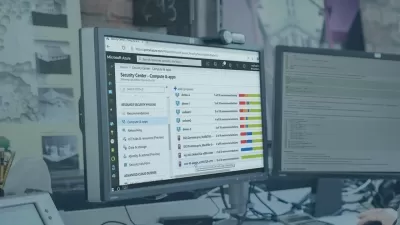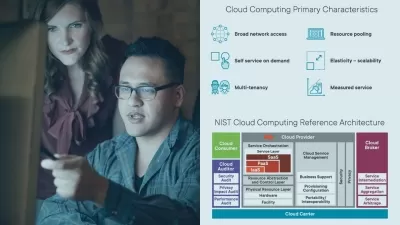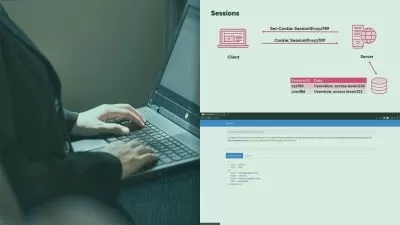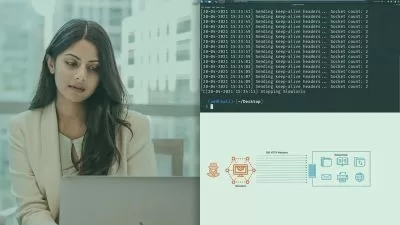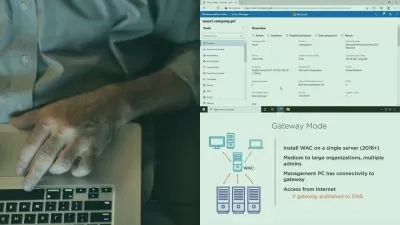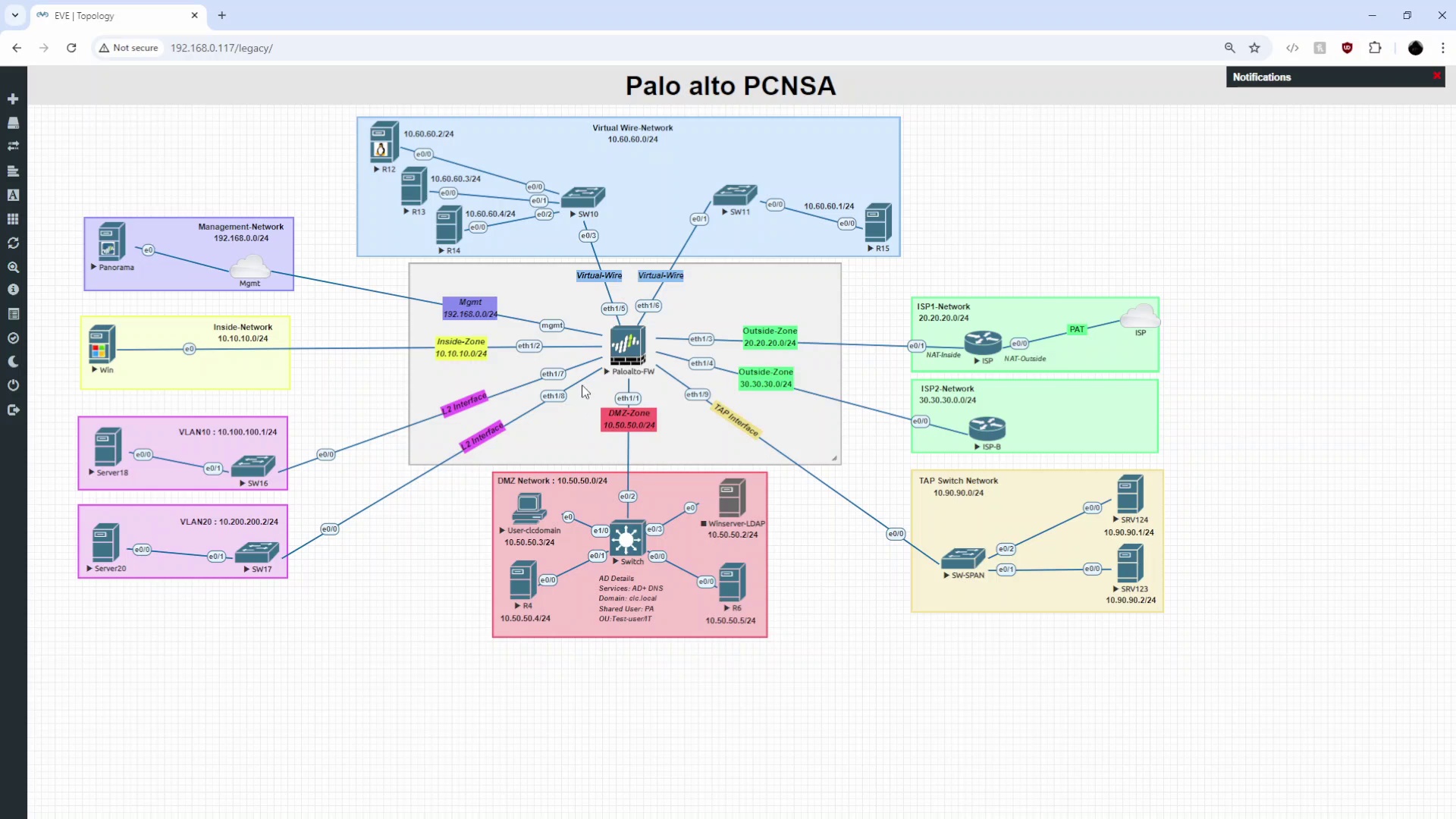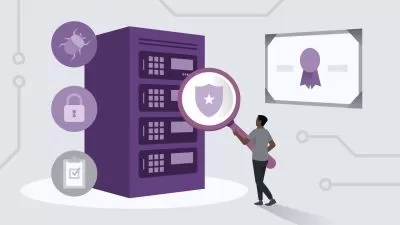Offensive Perspective - OWASP Security for Developers
Gabriel Avramescu
4:28:33
Description
Develop ”Out-of-box” thinking related to web secure codin and see security from offensive perspective
What You'll Learn?
- Best practices when it comes to secure coding for web developers
- OWASP Top 10 Web vulnerabilities
- "Out-of-box thinking" when it comes to exploiting certain vulnerabilities
- Learn certain tools and frameworks for offensive perspective
Who is this for?
What You Need to Know?
More details
DescriptionYou will learn to protect your web application by attacking it, by performing penetration testing on it. This course is rather theoretical with only some labs and demos.
Objectives
Develop â€Out-of-box†thinking
See security from an offensive perspective
Learn best security practices and (most and less) common attacks
Learn to defend your applications and infrastructure
Topics
Overview of Web Penetration Testing
OWASP Top Ten Web Vulnerabilities
API Top Ten vulnerabilities
HTTP Security Headers
JSON Web Tokens
Technical measures and best practices
Cryptography
Overview of Web Penetration Testing
Core problems
Web Technologies basics
Security Audit vs Vulnerability Assessment vs Pentest
Information Gathering
Scanning and Enumeration
Mapping the target surface
Attacking Users. Cross Site Scripting
Attacking the Server
Attacking Authentication
Attacking Data Stores
Top 10 API Security Vulnerabilities
API Vulnerabilities
Examples of vulnerabilities found in publicly accessible applications
OWASP Top Ten Web Vulnerabilities
A1: Injection
A2 – Broken Authentication and Session Management
A3 – Cross-Site Scripting (XSS)
A4 – Insecure Direct Object References
A5 – Security Misconfiguration
A6 – Sensitive data Exposure
A7 – Missing Function Level Access Control
A8 – Cross-Site Request Forgery (CSRF)
A9 – Using Components with Known Vulnerabilities
A10 – Unvalidated Redirects and Forwards
New Addition in OWASP TOP 10 - 2017
A4 - XML External entities (XXE)
A5 – Broken Access Control
A8 – Insecure Deserialization
A10 - Insufficient Logging & Monitoring
New additions in 2021
Common Vulnerabilities: XSS, SQL Injection, CSRF, XXE, LFI
HTTP Security Headers
Understand HTTP Security Tokens and their role
HSTS - Strict-Transport-Security
CSP - Content-Security-Policy
CORS
X-Frame-Options
X-XSS-Protection
X-Content-Type-Options
Referrer-Policy
Cookie flags: HTTPOnly, Secure
JSON Web Tokens
Understanding JSON WEB TOKENS
Token Structure
When can you use JWT
Issues
What is JWT good for?
Best Practices for JSON Web Tokens
Technical measures and best practices
Input Validation
Encoding
Bind Parameters for Database Queries
Protect Data in Transit
Hash and Salt Your Users' Passwords
Encrypt Data at Rest
Logging - Best practices
Authenticate Users Safely
Protect User Sessions
Authorize Actions
Cryptography
Cryptographic concepts
Algorithms
Cryptography and cryptanalysis tools
Cryptography attacks
Who this course is for:
- Developers, Dev(Sec)Ops and software architects mostly
- Also useful for system administrators, technical managers and CISO
- Ethical Hackers, Penetration Testers, Bug Bounty Fans
You will learn to protect your web application by attacking it, by performing penetration testing on it. This course is rather theoretical with only some labs and demos.
Objectives
Develop â€Out-of-box†thinking
See security from an offensive perspective
Learn best security practices and (most and less) common attacks
Learn to defend your applications and infrastructure
Topics
Overview of Web Penetration Testing
OWASP Top Ten Web Vulnerabilities
API Top Ten vulnerabilities
HTTP Security Headers
JSON Web Tokens
Technical measures and best practices
Cryptography
Overview of Web Penetration Testing
Core problems
Web Technologies basics
Security Audit vs Vulnerability Assessment vs Pentest
Information Gathering
Scanning and Enumeration
Mapping the target surface
Attacking Users. Cross Site Scripting
Attacking the Server
Attacking Authentication
Attacking Data Stores
Top 10 API Security Vulnerabilities
API Vulnerabilities
Examples of vulnerabilities found in publicly accessible applications
OWASP Top Ten Web Vulnerabilities
A1: Injection
A2 – Broken Authentication and Session Management
A3 – Cross-Site Scripting (XSS)
A4 – Insecure Direct Object References
A5 – Security Misconfiguration
A6 – Sensitive data Exposure
A7 – Missing Function Level Access Control
A8 – Cross-Site Request Forgery (CSRF)
A9 – Using Components with Known Vulnerabilities
A10 – Unvalidated Redirects and Forwards
New Addition in OWASP TOP 10 - 2017
A4 - XML External entities (XXE)
A5 – Broken Access Control
A8 – Insecure Deserialization
A10 - Insufficient Logging & Monitoring
New additions in 2021
Common Vulnerabilities: XSS, SQL Injection, CSRF, XXE, LFI
HTTP Security Headers
Understand HTTP Security Tokens and their role
HSTS - Strict-Transport-Security
CSP - Content-Security-Policy
CORS
X-Frame-Options
X-XSS-Protection
X-Content-Type-Options
Referrer-Policy
Cookie flags: HTTPOnly, Secure
JSON Web Tokens
Understanding JSON WEB TOKENS
Token Structure
When can you use JWT
Issues
What is JWT good for?
Best Practices for JSON Web Tokens
Technical measures and best practices
Input Validation
Encoding
Bind Parameters for Database Queries
Protect Data in Transit
Hash and Salt Your Users' Passwords
Encrypt Data at Rest
Logging - Best practices
Authenticate Users Safely
Protect User Sessions
Authorize Actions
Cryptography
Cryptographic concepts
Algorithms
Cryptography and cryptanalysis tools
Cryptography attacks
Who this course is for:
- Developers, Dev(Sec)Ops and software architects mostly
- Also useful for system administrators, technical managers and CISO
- Ethical Hackers, Penetration Testers, Bug Bounty Fans
User Reviews
Rating
Gabriel Avramescu
Instructor's Courses
Udemy
View courses Udemy- language english
- Training sessions 24
- duration 4:28:33
- English subtitles has
- Release Date 2023/11/21






